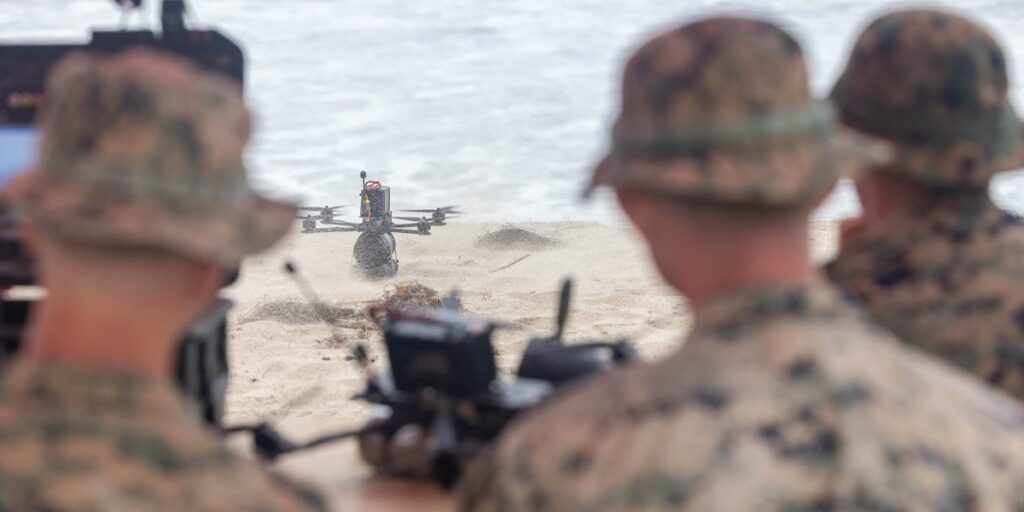Marines tested and evaluated commercial drone tech in California recently, running them through combat scenarios as part of an effort to figure out which systems the US military should buy.
During Phase 2 of the Defense Innovation Unit’s G.I. Challenge at Camp Pendleton, Marines ran industry drones through combat scenarios and rated their performance. The feedback will help guide Department of War procurement as it rushes to expand its drone arsenal.
The testing and eval event involved Marines from the 1st Marine Division, DIU, and drone-making defense industry partners, according to the I Marine Expeditionary Force.
The Marines spent four days familiarizing themselves with the drones before spending six more putting them through combat simulations. They graded the drones on setup time, payload capacity, endurance, and performance across weather and terrain.
The Marines also assessed how drones shaped battlefield tactics, from operating in contested environments to supporting kill chains and testing the impact of first-person view systems.
“The G.I. Challenge puts our Marines at the center of capability development. Their expertise, combined with the innovation of our industry partners, is shaping the next generation of unmanned systems,” Brig. Gen. Michael Nakonieczny, I MEF deputy commanding general, said. “I MEF is proud to play a leading role in advancing technologies that directly enhance the lethality and survivability of our Marines.”
This exercise was the second part of the DIU’s ongoing selection process for new drones. The first phase involved initial screenings for further testing. After this round of testing, the final part will determine which drones could be part of DoD’s “Blue UAS List.” Results are expected by March 2026.
Across the military, US troops are actively learning, building, and flying drones as Pentagon leaders make them a priority for future warfighting.
Recent US military training exercises have resulted in some wins, like the US Army’s first drone-on-drone kill at Fort Rucker in Alabama last month. They’ve also exposed weaknesses, like soldiers struggling with video feed connections or a lack of spare parts in the field.
The US military is playing catch-up on drone warfare, but there are questions on how quickly it can close the gap, a focus for emerging courses and training programs.
US military officials say integrating drones, especially the smaller uncrewed aerial systems, has been a trial-and-error process that involves learning by doing and highlights both the challenges and the value of troops working closely with industry partners to refine designs and capabilities.
Read the full article here


